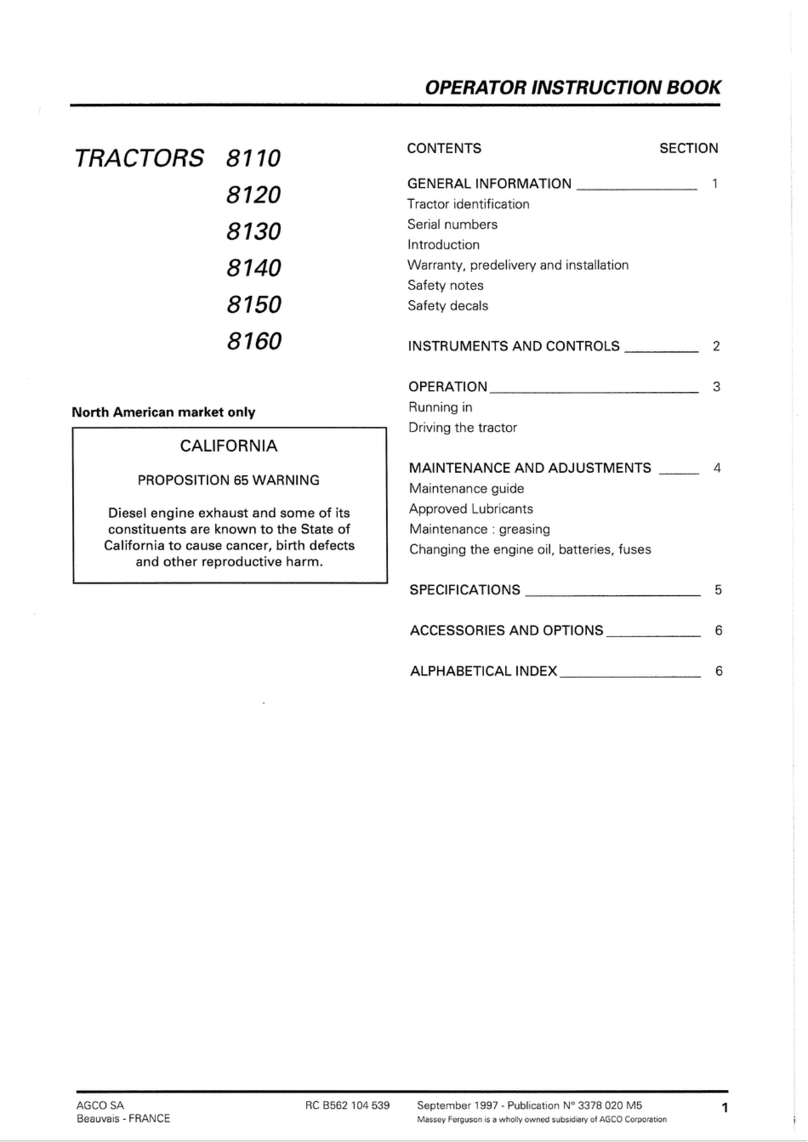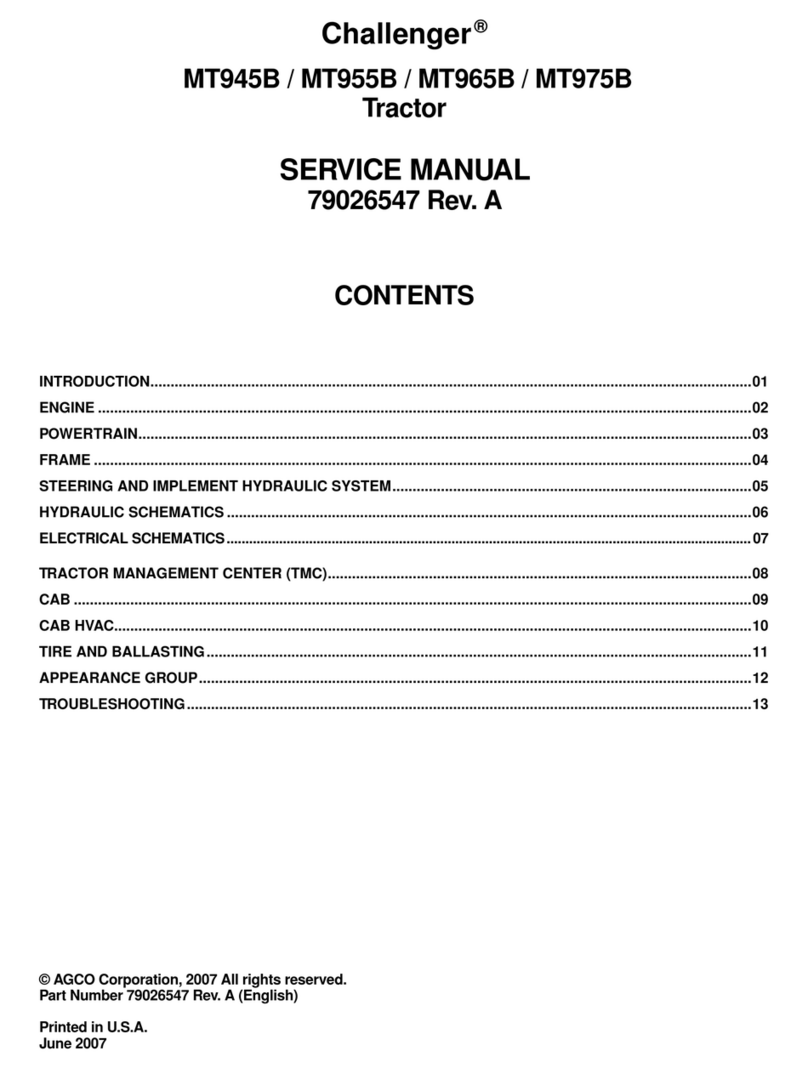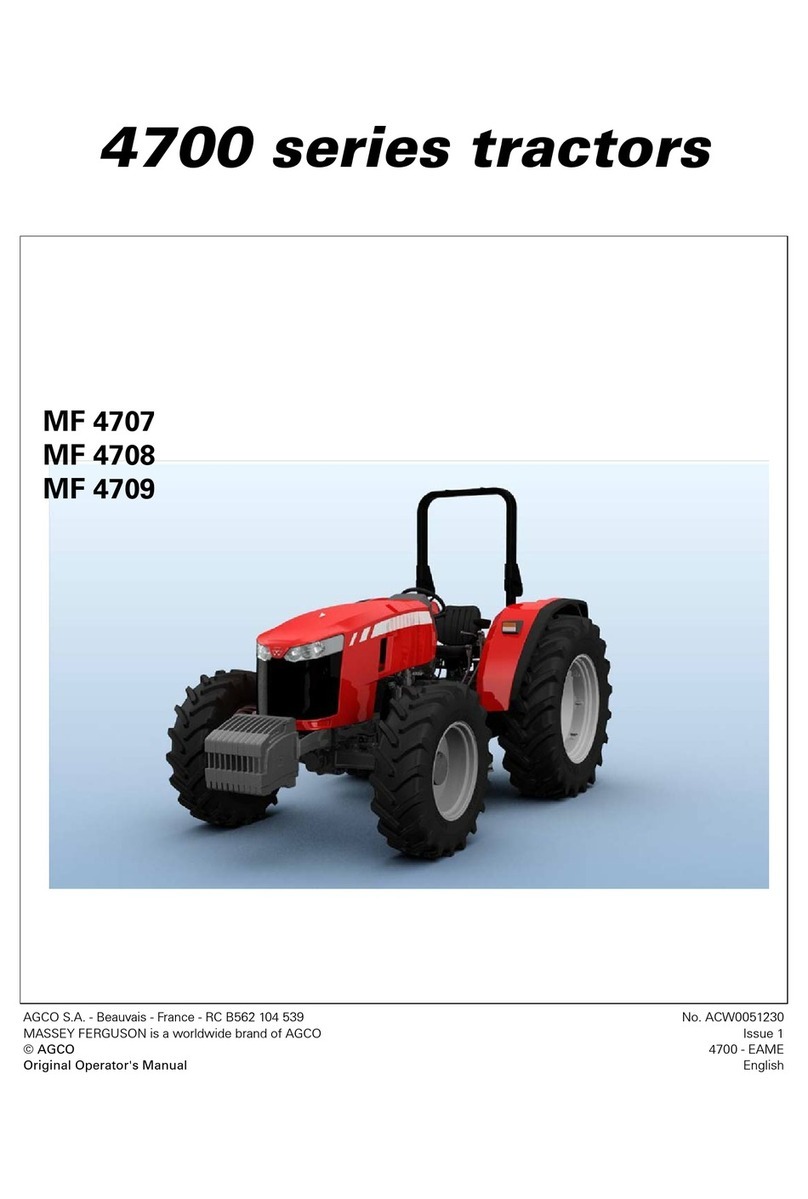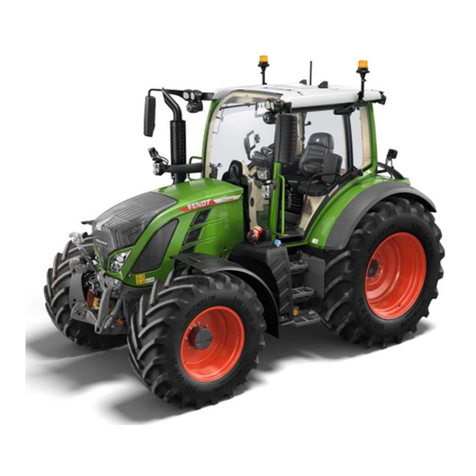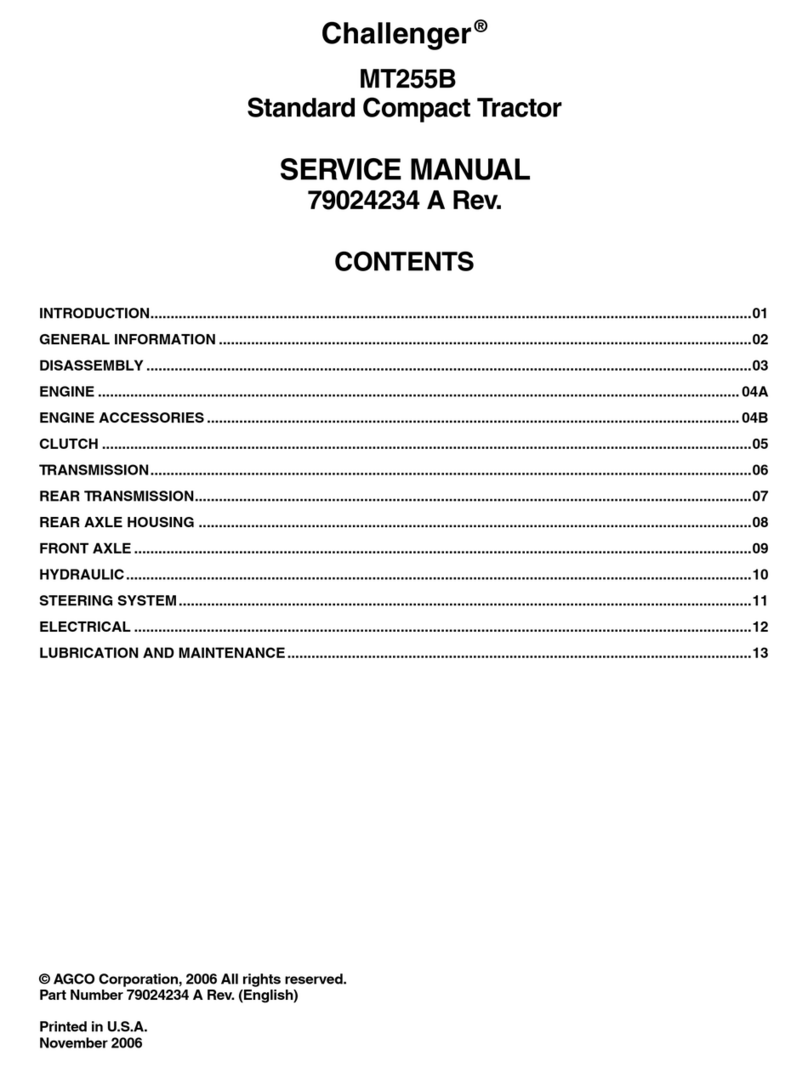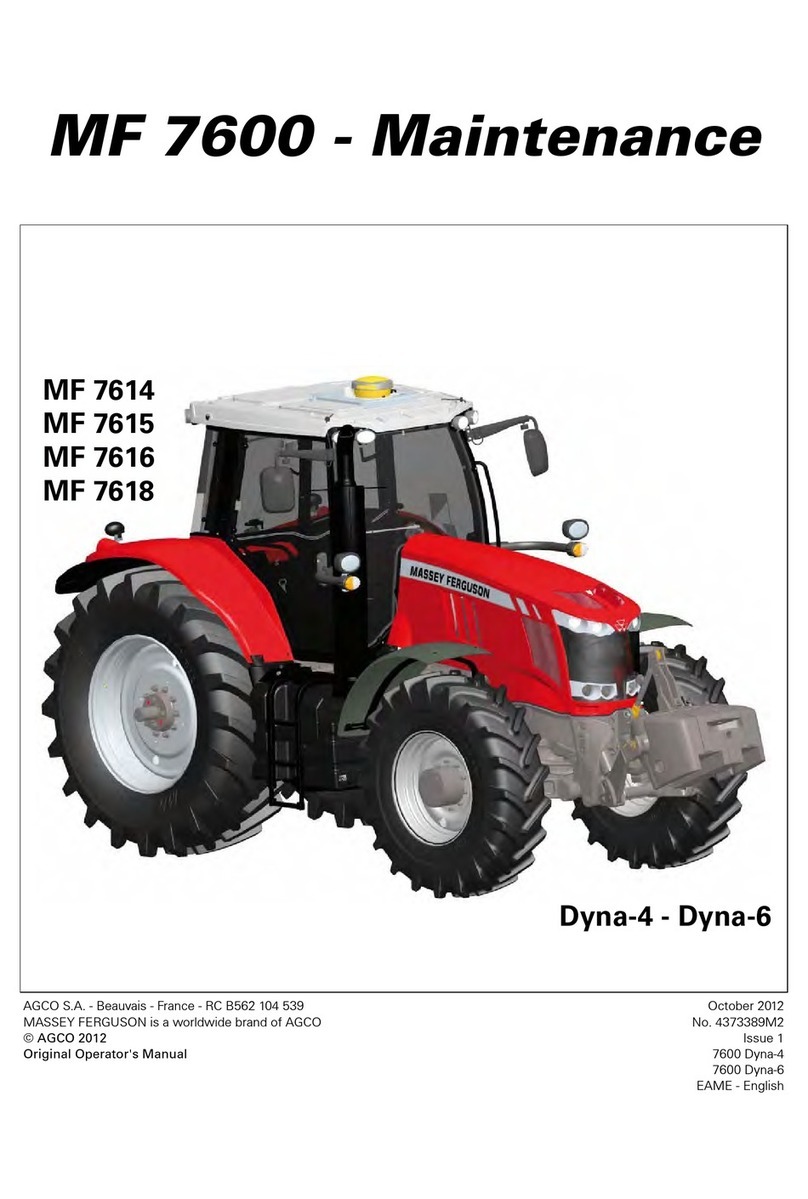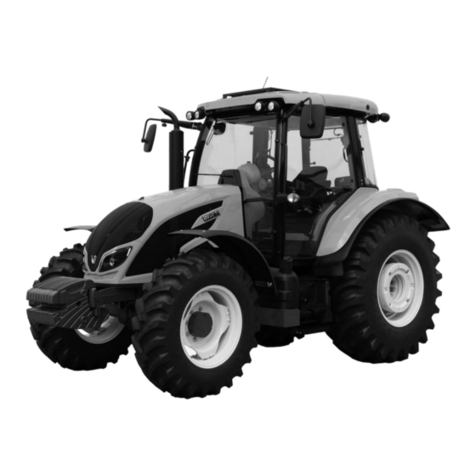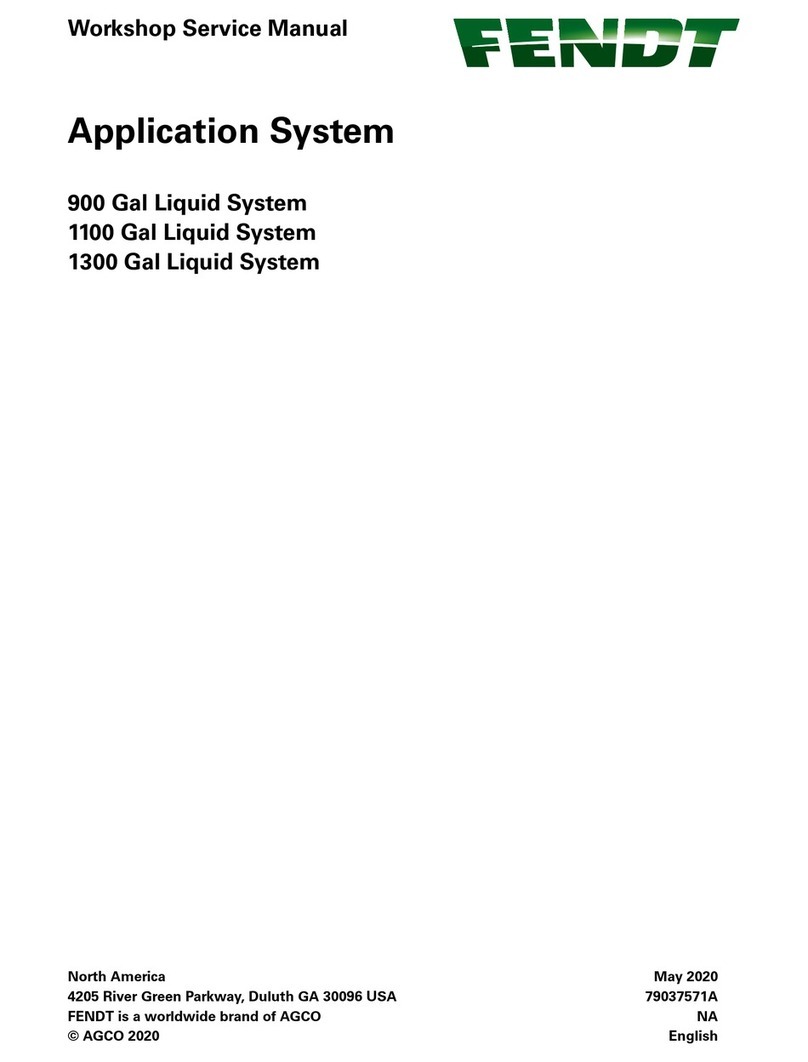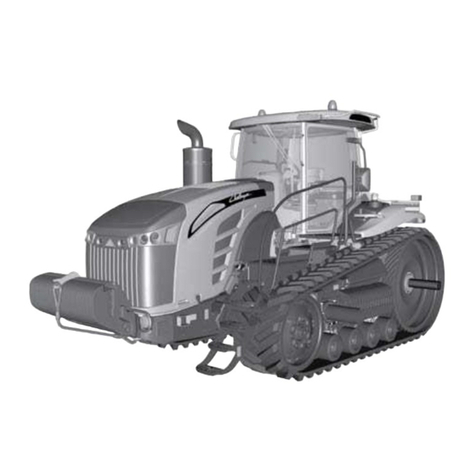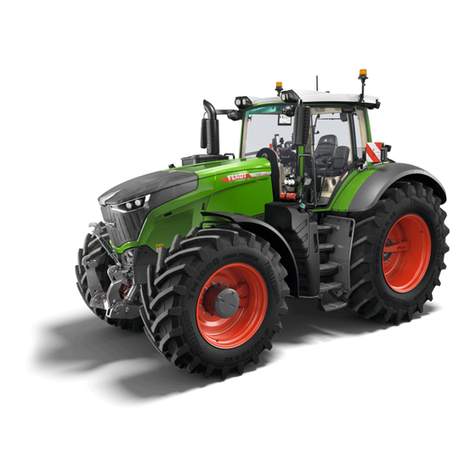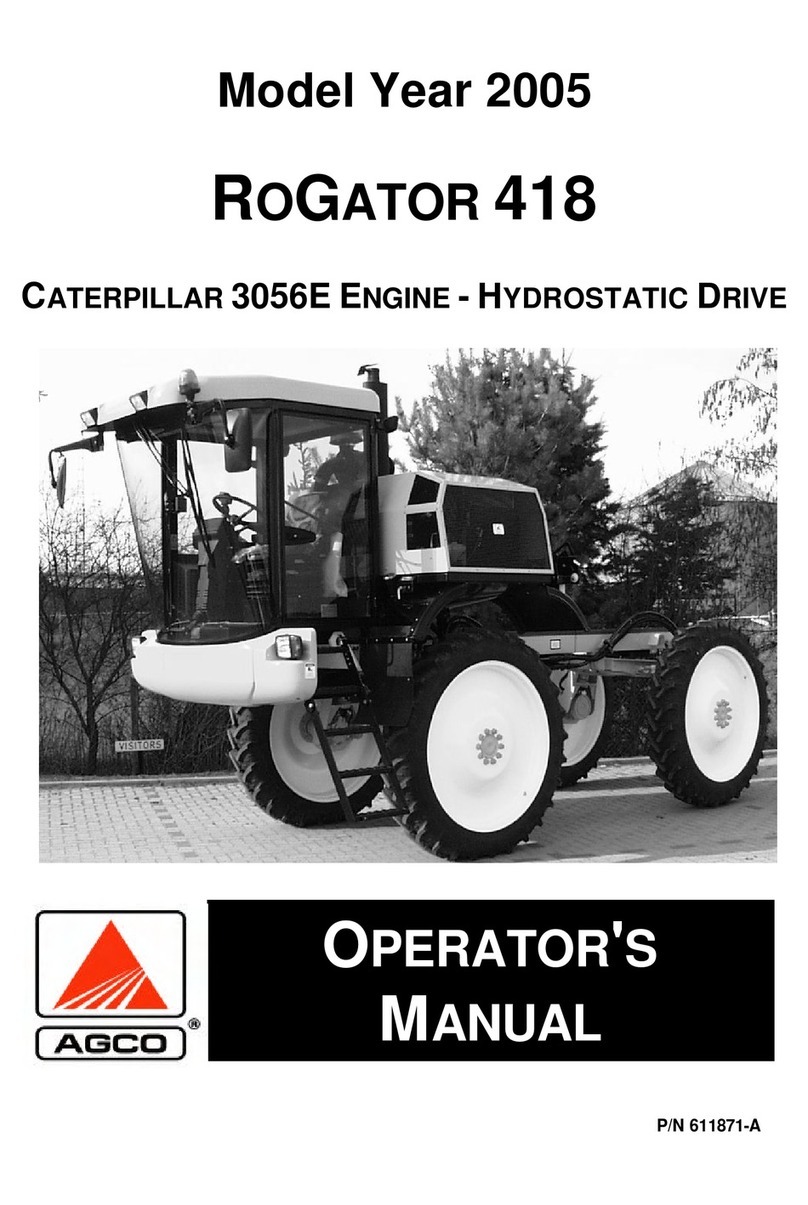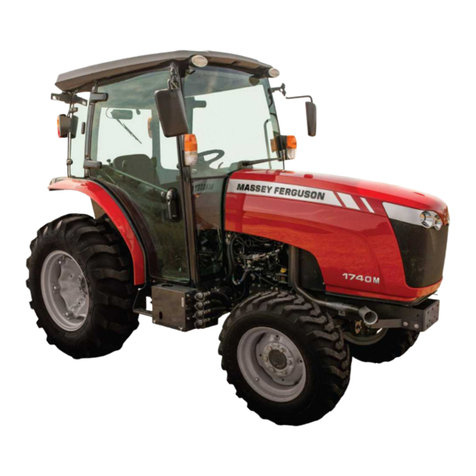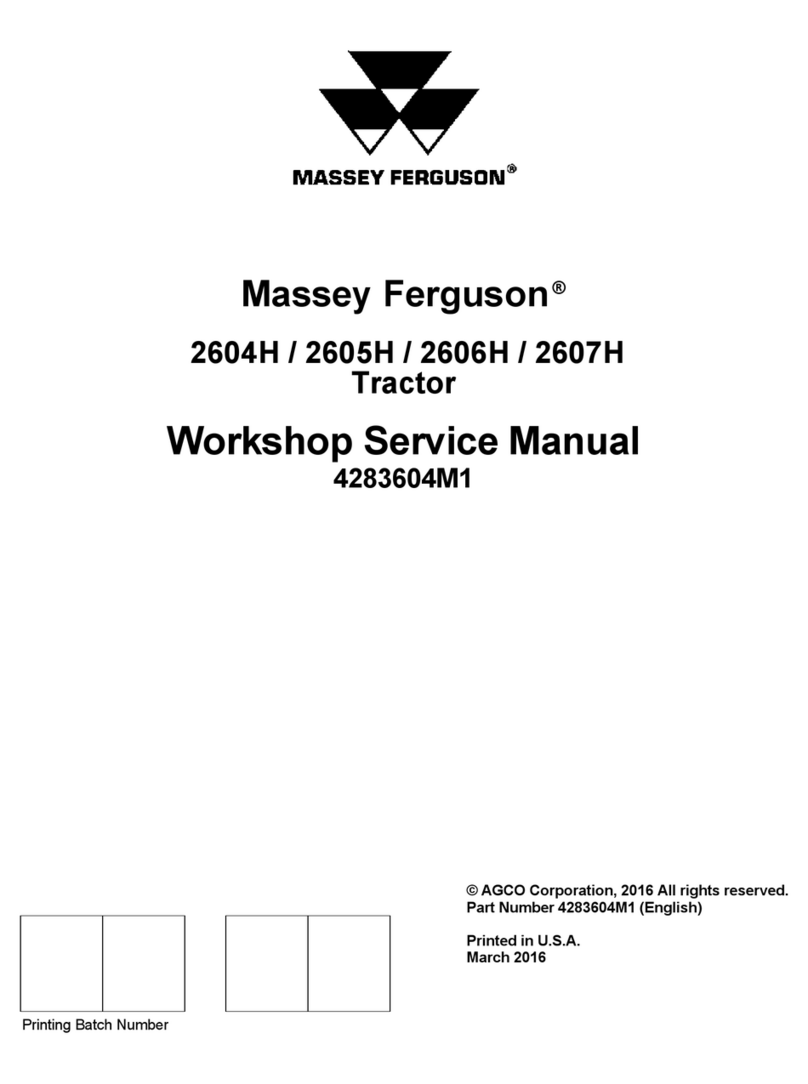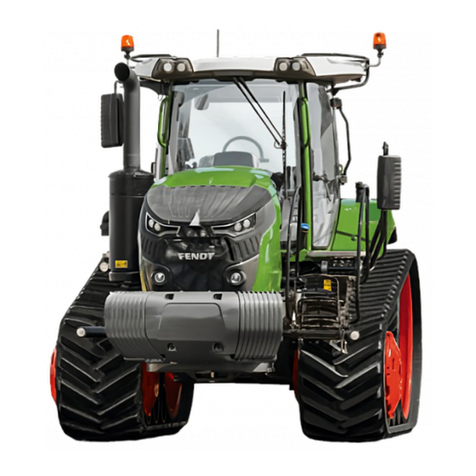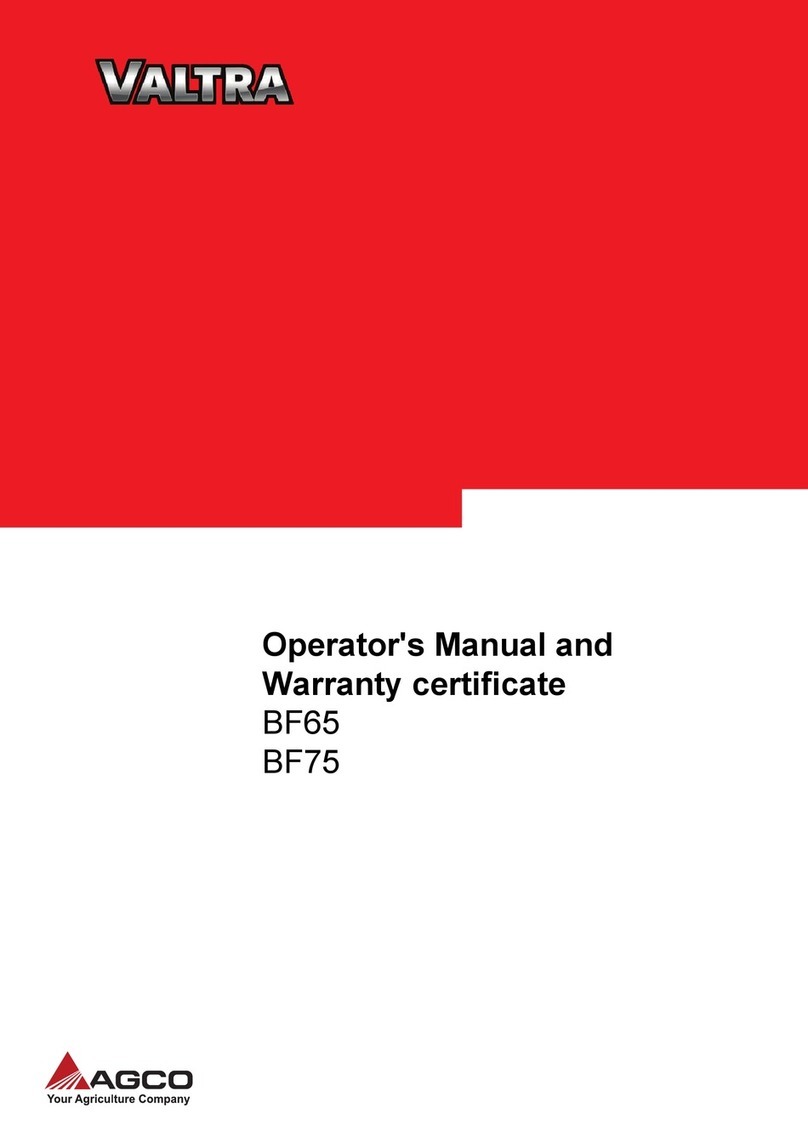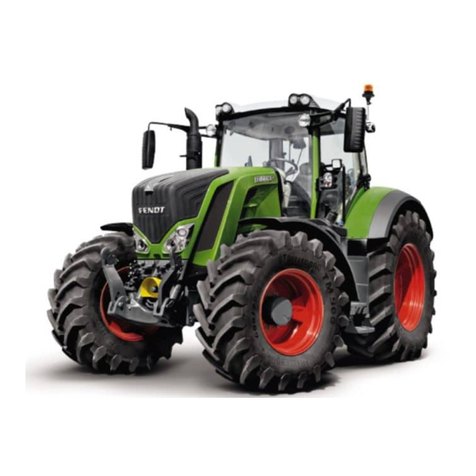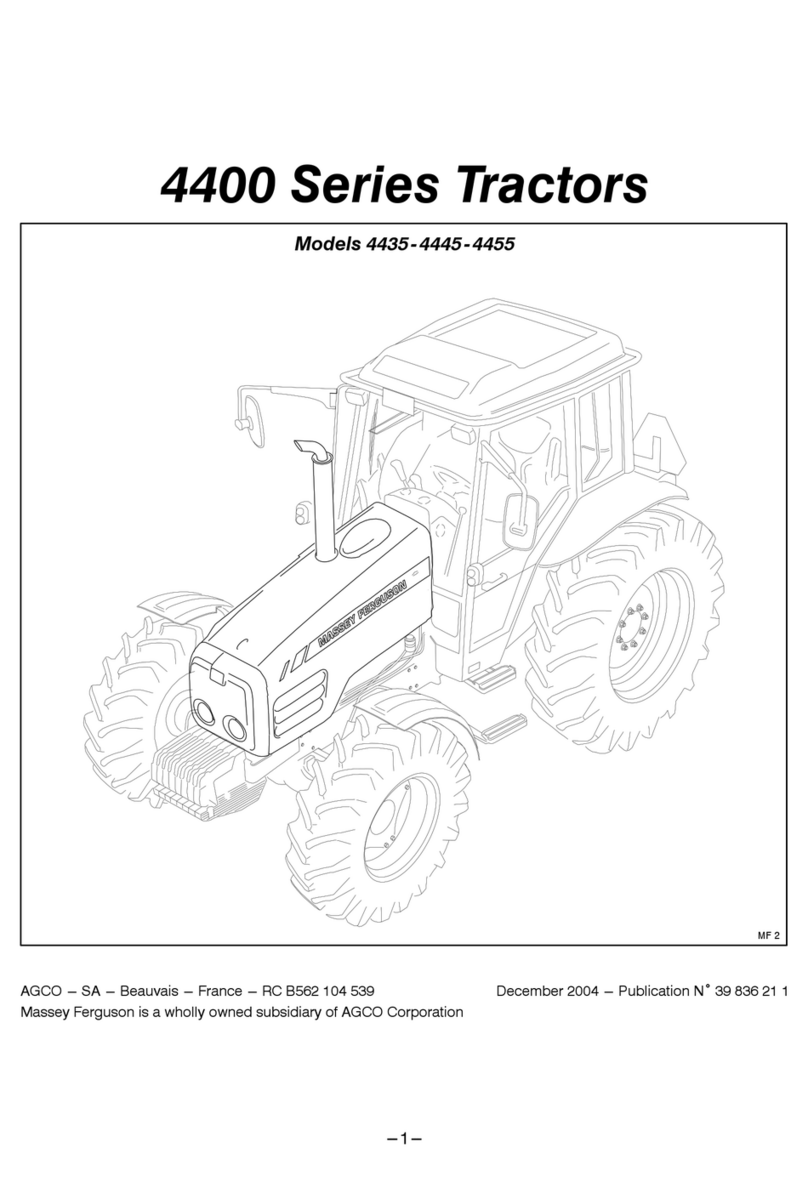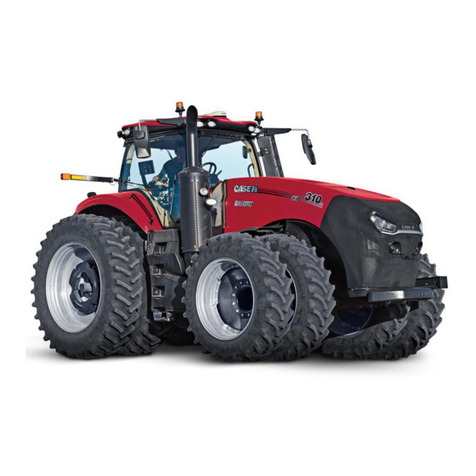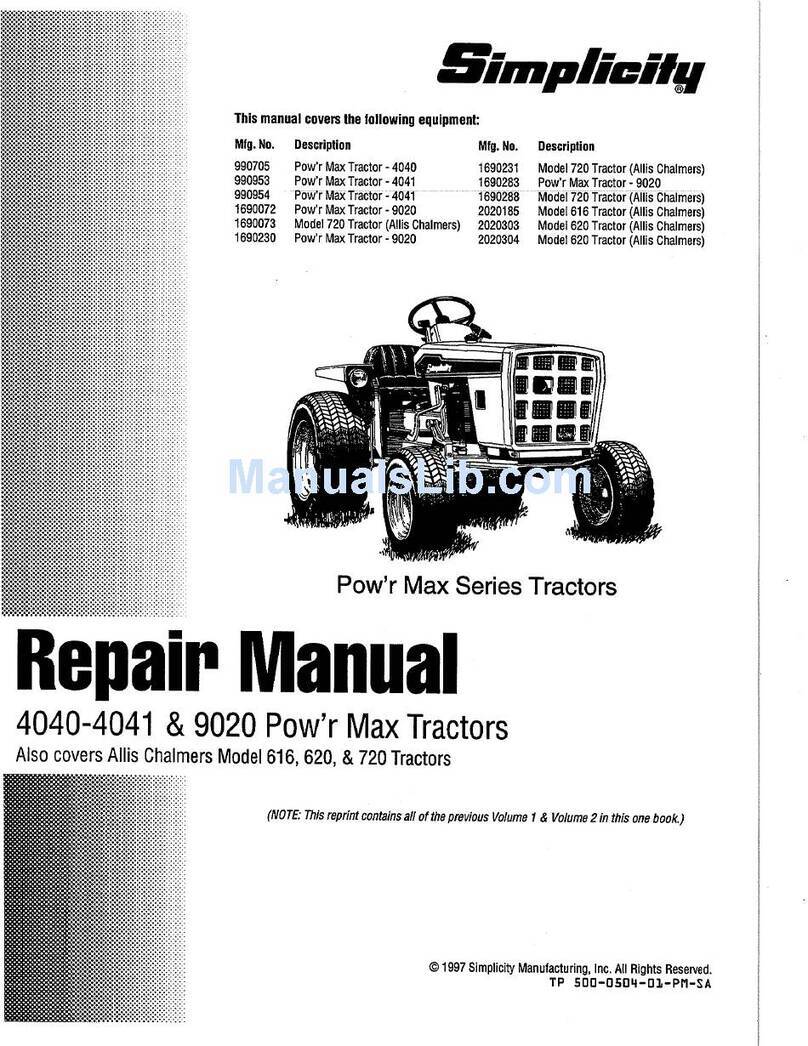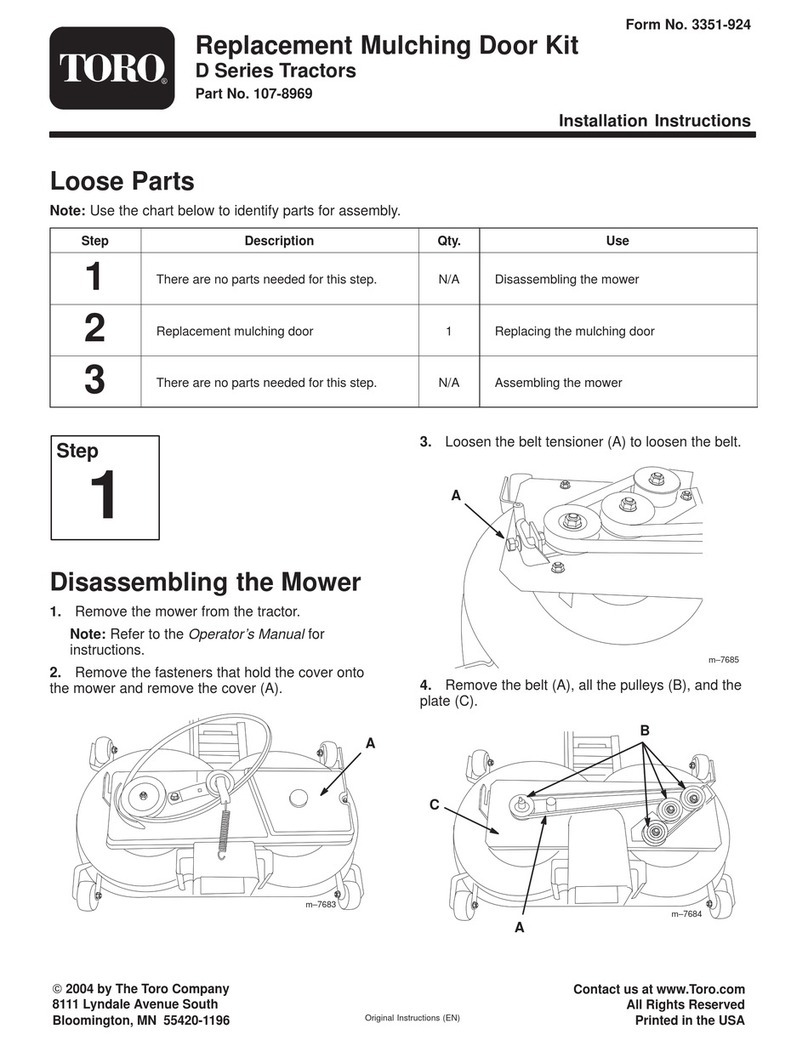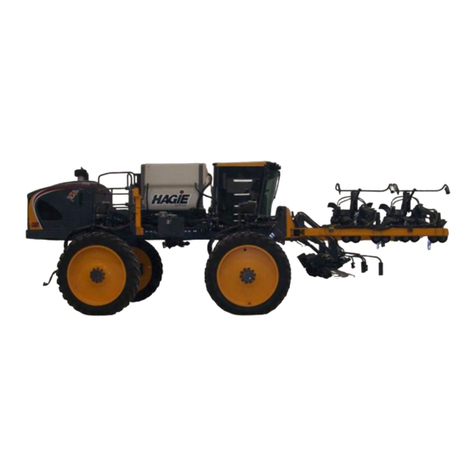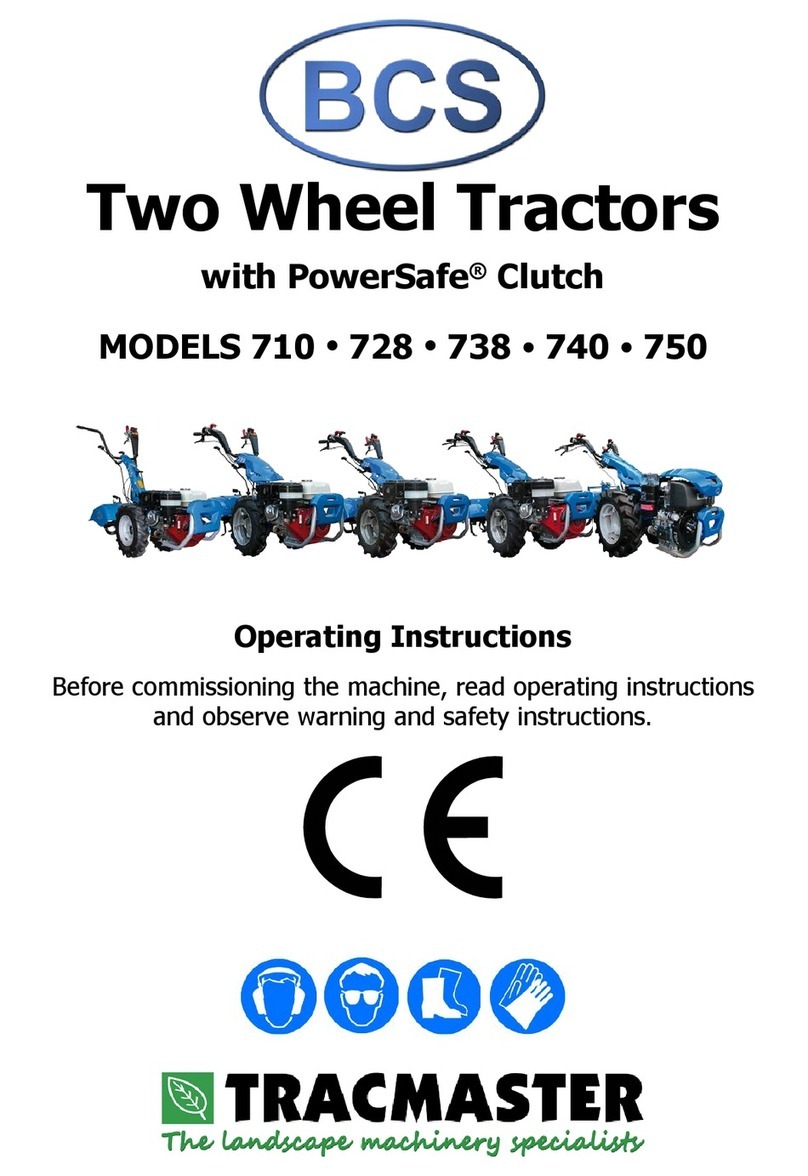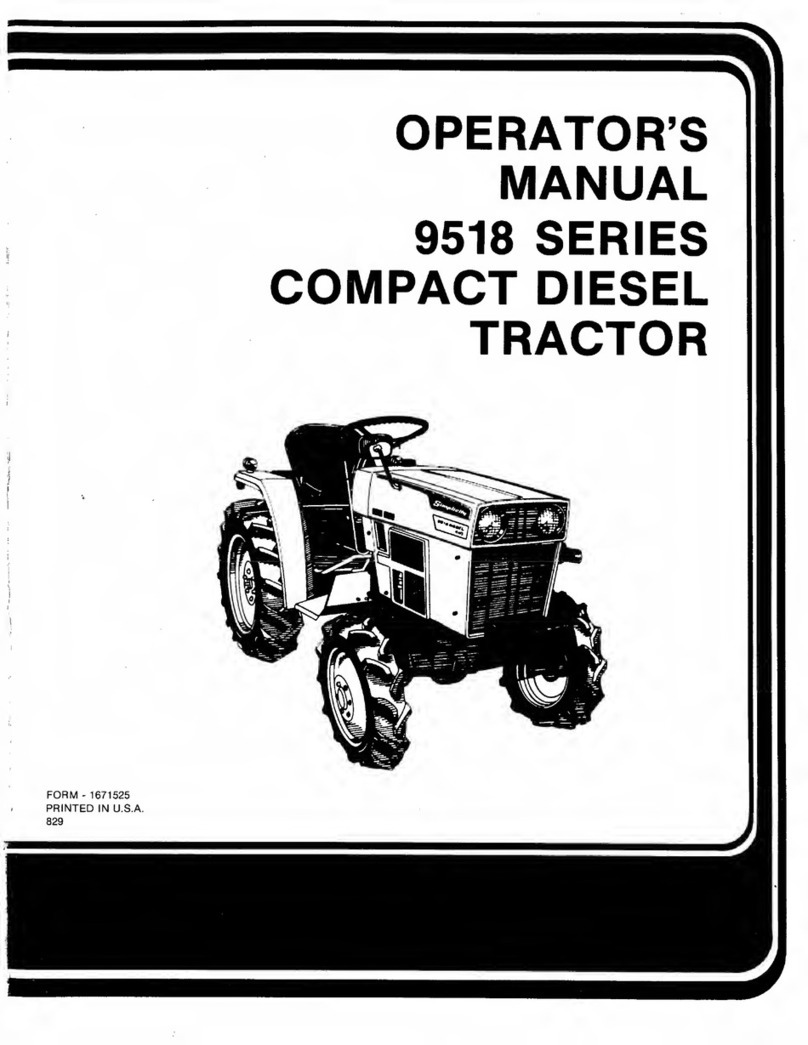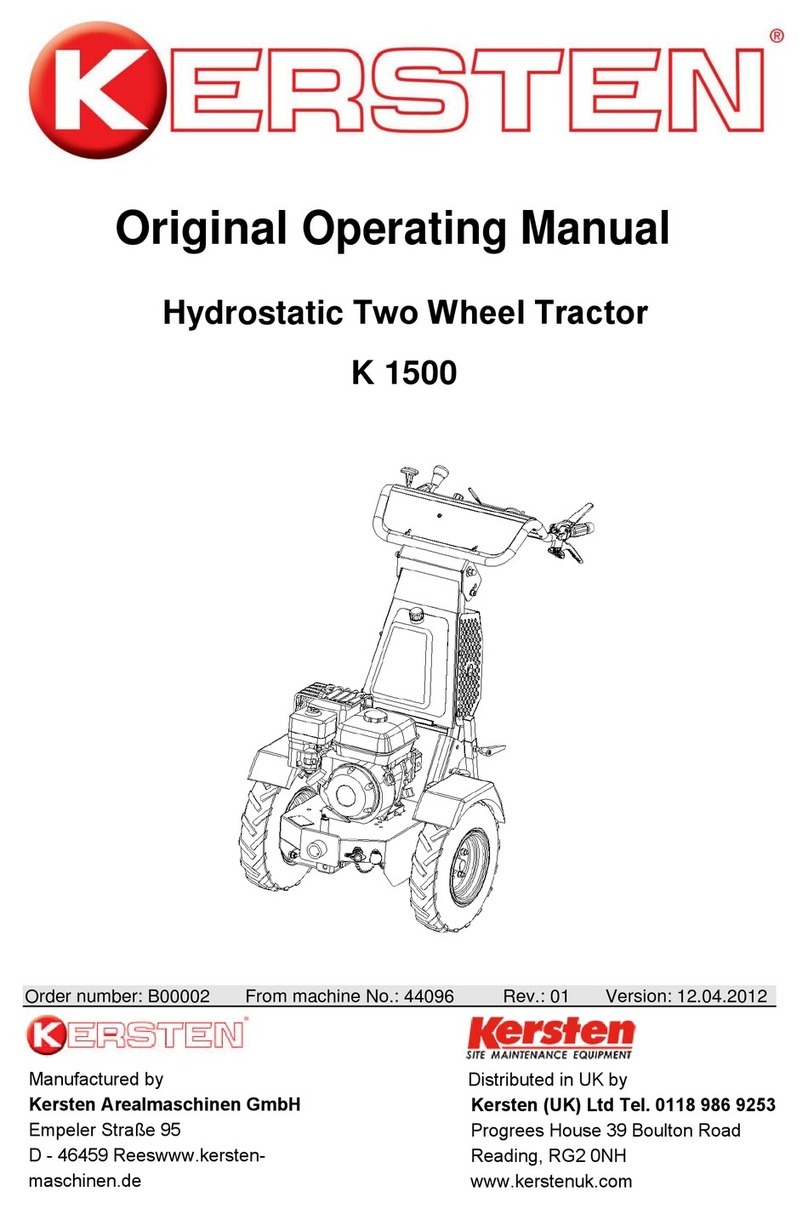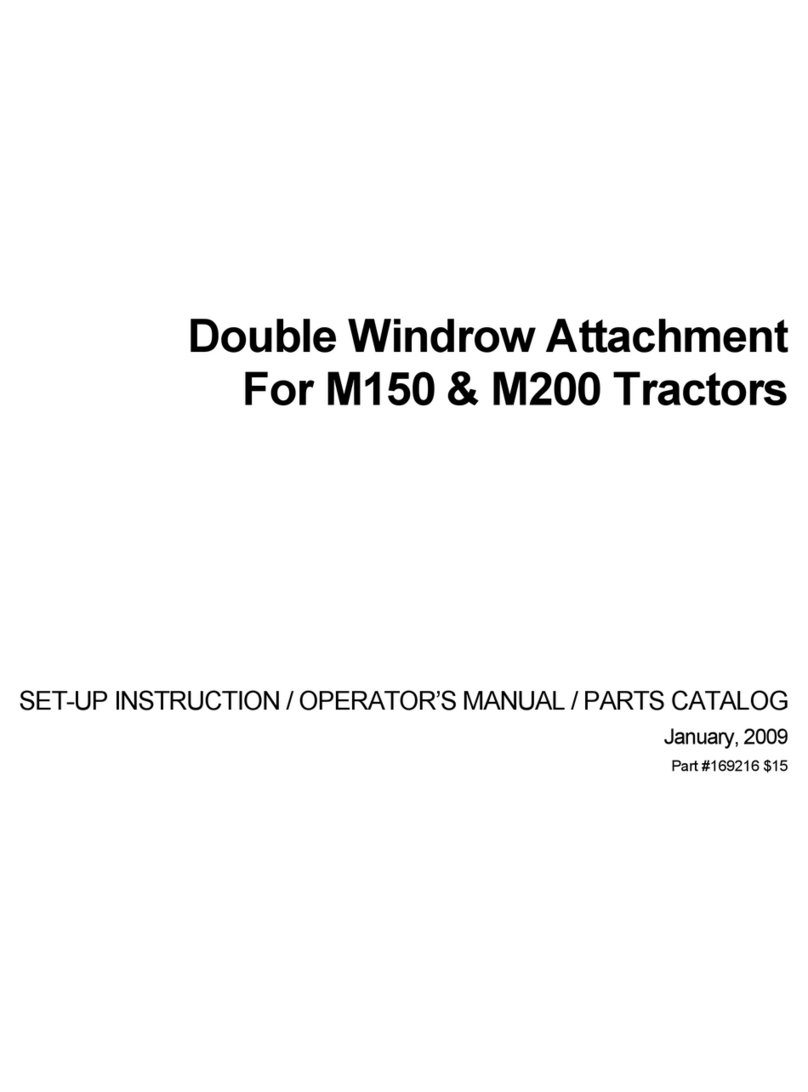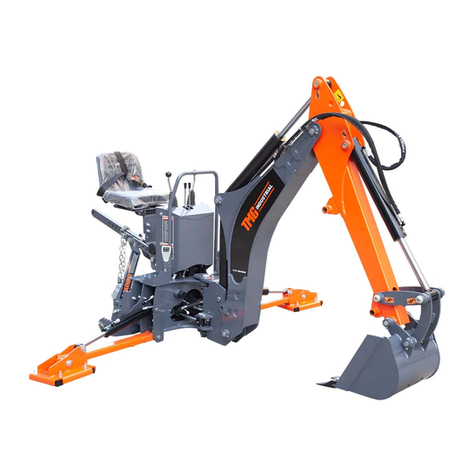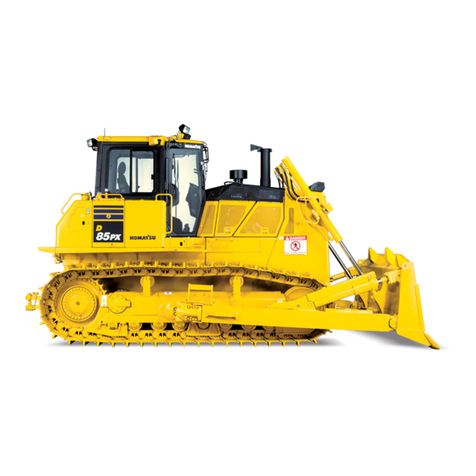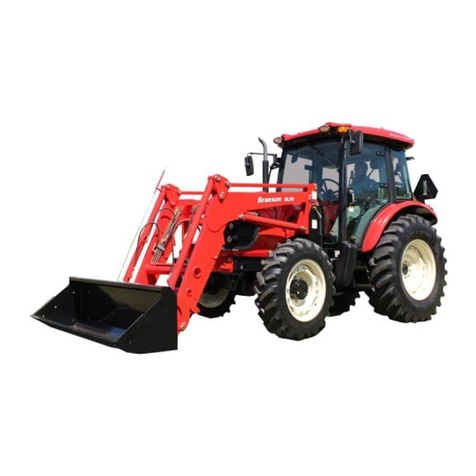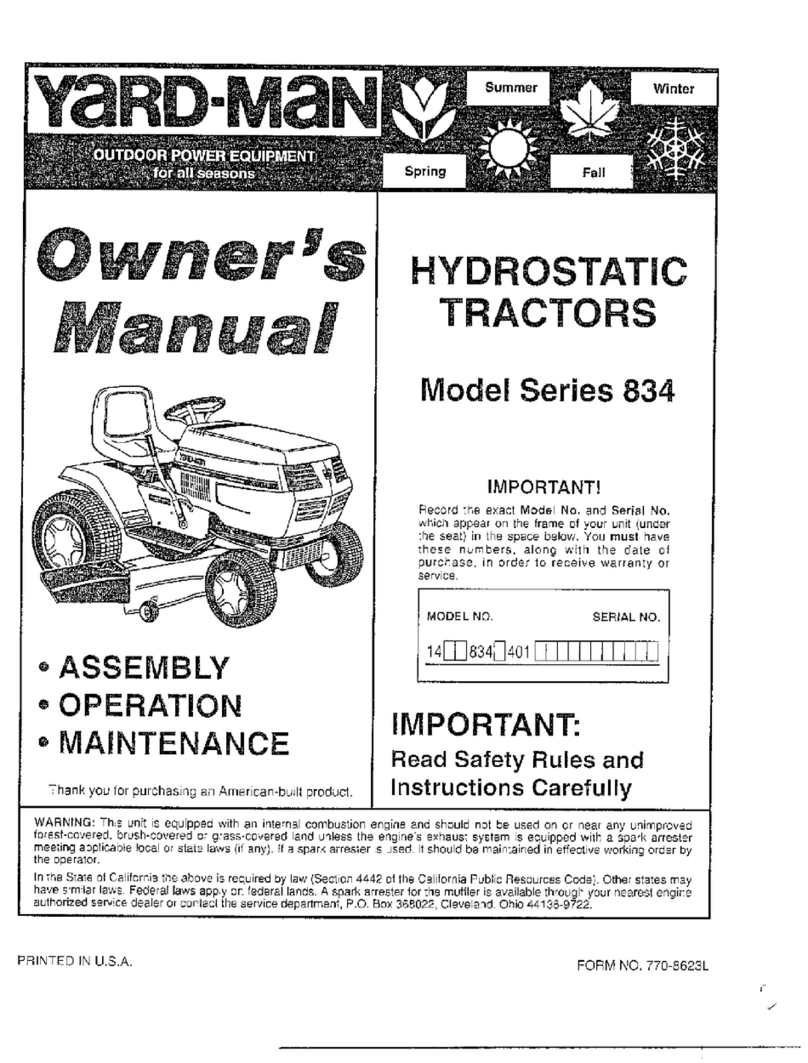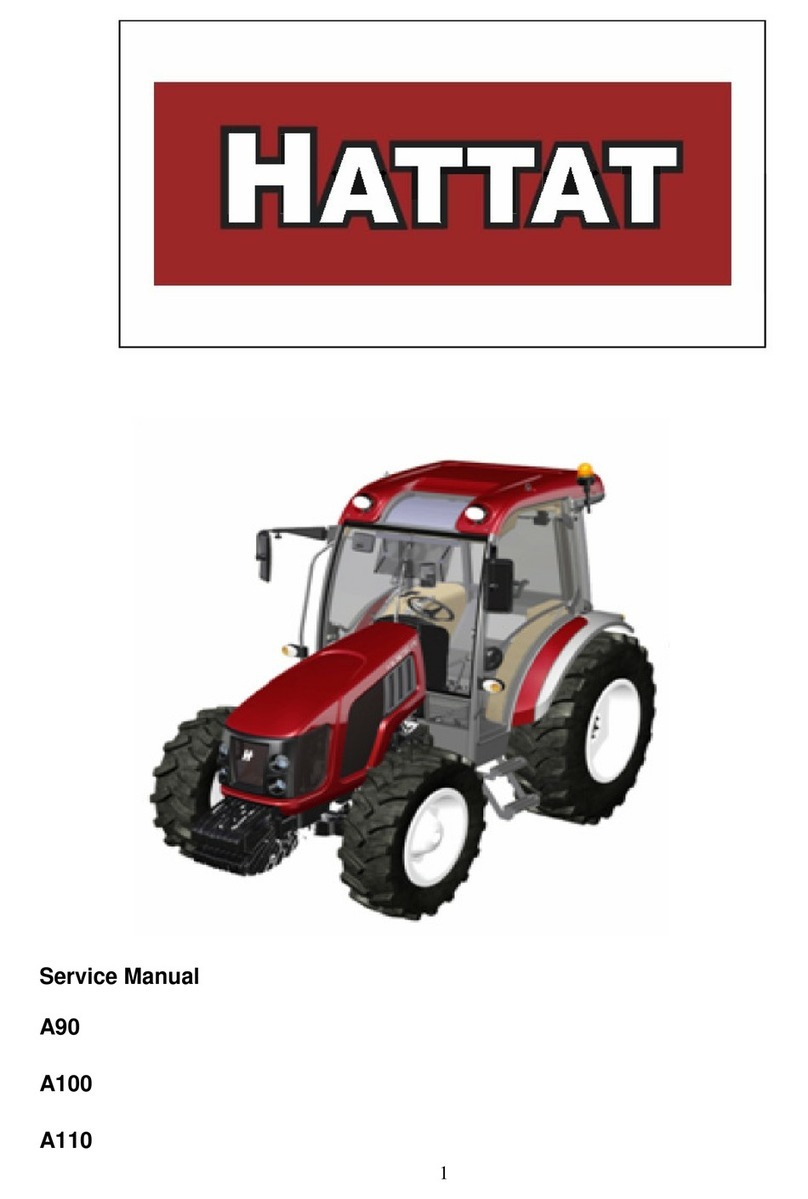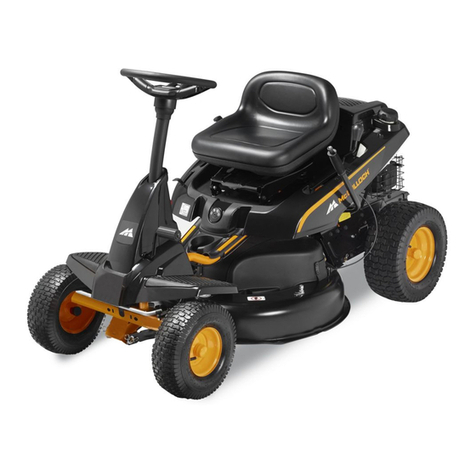
Introduction and Safety in the Workshop
1A-8 MF 533/543/563 - Issue 1
This Service Manual provides general directions for
accomplishing service and repair work with tested,
effective techniques. Following them will help assure that
a thorough repair is successfully completed.
There are numerous variations in procedures, techniques,
tools, and parts for servicing tractors, as well as in the skill
of the individual doing the work. This Manual cannot
possibly anticipate all such variations and provide advice
or cautions as to each. Anyone who departs from the
instructions provided in this Manual must realise that one
compromises their personal safety and the tractor’s
integrity by the choice of repair methods, tools and/or
parts.
Service Techniques
Clean the exterior of all components before carrying any
form of repair. Dirt and abrasive dust can reduce the
efficient working life of a component and lead to costly
replacement.
Time spent on the preparation and cleanliness of working
surfaces will pay dividends in making the job easier and
safer and will result in overhauled components being
more reliable and efficient in operation.
Use cleaning fluids which are known to be safe. Certain
types of fluid can cause damage to ‘O’rings and cause
skin irritation. Check the label on Solvents to ensure that
they are suitable for the cleaning of components and also
that they DO NOT risk the personal safety of the user.
Replace ‘O’rings, seals or gaskets whenever they are
disturbed. Never mix new and old seals or ‘O’rings,
regardless of condition. Always lubricate new seals and
‘O’rings with hydraulic oil before installation.
When replacing component parts use the correct tool for
the job.
Hoses and Tubes
Always replace hoses and tubes if their ends are
damaged.
When installing a new hose, loosely connect each end
and make sure the hose takes up the designed position
before tightening the connection. Clamps should be
tightened sufficiently to hold the hose without crushing
and to prevent chafing or contact with other parts.
Before removing hoses or tubes make sure they are
identified so that they can be correctly re-assembled.
Be sure any hose which has been installed is not kinked
or twisted after it is tightened.
Bearings
Bearings which are considered suitable for further service
should be cleaned in a suitable solvent and immersed in
clean lubricating oil until required.
DO NOT spin bearings with compressed air. The
centrifugal force could cause a ball or roller to fly outward
with enough force to cause an injury.
Installation of a bearing can be classified in two ways:
press fit on rotating parts such as shafts, and gears, and
push fit into static locations such as reduction gear
housings. Where possible, always install the bearing onto
the rotating component first.
Always use pullers or a press to remove and/or install
bearings, bushings and cylinder sleeves, etc. Use
hammers, punches and chisels only when absolutely
necessary and be sure to wear safety goggles.
Shims
When shims are removed, tie them together and identify
them as to location. Keep shims clean and flat until they
are re-installed.
Gaskets
Be sure the holes in the gasket correspond with the
lubricant passages in the mating parts. If gaskets are to
be made, select material of the proper type and
thickness. Be sure to cut holes in the right places. Blank
gaskets can cause serious damage - always renew
gaskets prior to re-installation.
Lip Type Seals
Lubricate the lips of the lip-type seals before installation.
Use petroleum jelly. DO NOT use grease. Ensure that the
oil seal is fitted the right way round, the lip of the seal is
placed next to the lubricant that is sealed. Some seals
have a second auxiliary lip, which is used to prevent the
ingress of dirt to the seal lip.
If, during installation, the seal lip must pass over a shaft
that has splines, a keyway, rough surface or a sharp edge,
the lip can be easily damaged. Always use a seal
protector, when one is provided.
Use of Bolts in Blind Holes
Use bolts of the correct length. A bolt which is too long
may ‘bottom’before the head is tight against the part it is
to hold. The threads can be damaged when a ‘long’bolt
is removed. If a bolt is too short, there may not be enough
threads engaged to hold the part securely.
Locking Devices
Lockwashers, flat metal locks or split pins are used to lock
nuts and bolts.
Flat metal locks must be installed properly to be effective.
Bend one end of the lock around the edge of the part.
Bend the other end against one flat surface of the nut or
bolt head. Always install new locks.
Always fit new split pins/cotter pins and bend the ends
round so that they will not catch in clothing and help to
prevent cuts.
Cables and Wires
When removing or disconnecting a group of cables or
wires, tag each one to assure proper re-assembly.
Always clip back wires and cable looms properly to
prevent chafing, cable damage and possible damage by
fire.
Find manuals at https://best-manuals.com




















